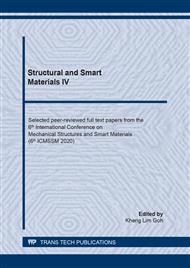p.93
p.104
p.114
p.120
p.126
p.131
p.139
p.148
p.157
Crack Growth Evaluation of Induction Quenched JIS-S45C Steel Based on Stress Intensity Factor Simulation
Abstract:
Problems lived with fatigue fracture for the safe design of the members and structures. In this study, rotating bending tests were performed to investigate the fatigue crack propagation behavior of induction quenched and tempered JIS S45C low carbon steel. Hardness distribution was checked by the Vickers hardness test machine and the microstructure in cross section and fracture surface were observed with an optical microscope and a scanning electron microscope. The depth of the hardened boundary was approximately 1 mm from the surface and formation into martensite occurred at the surface of the specimen. It was ascertained that fracture surface of notched specimens consisted of the five fracture types. In addition, the maximum stress intensity factor of fatigue cracks increased during rotating bending test on notched specimen. The relation between SIF and the fracture surface is discussed.
Info:
Periodical:
Pages:
126-130
Citation:
Online since:
February 2021
Authors:
Keywords:
Price:
Сopyright:
© 2021 Trans Tech Publications Ltd. All Rights Reserved
Share:
Citation:


